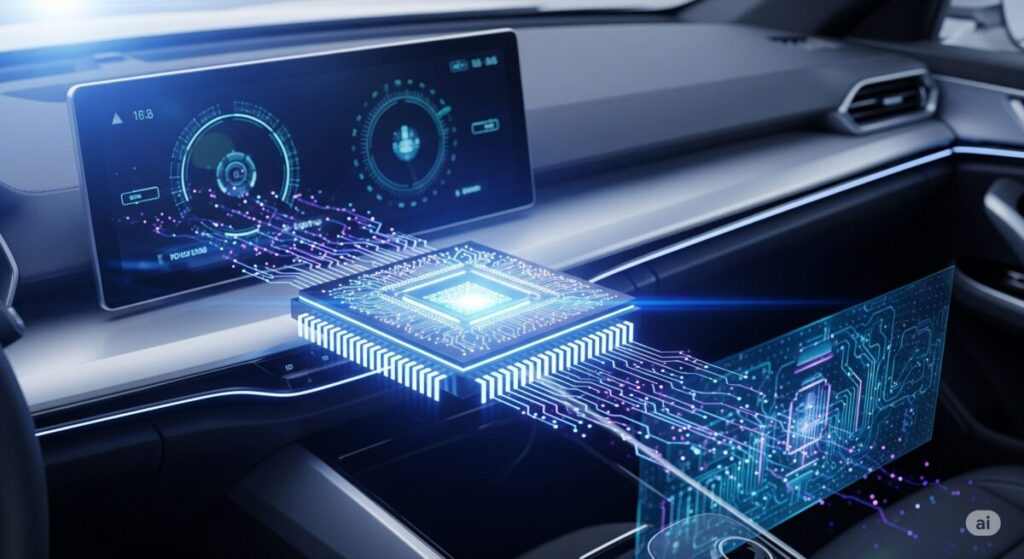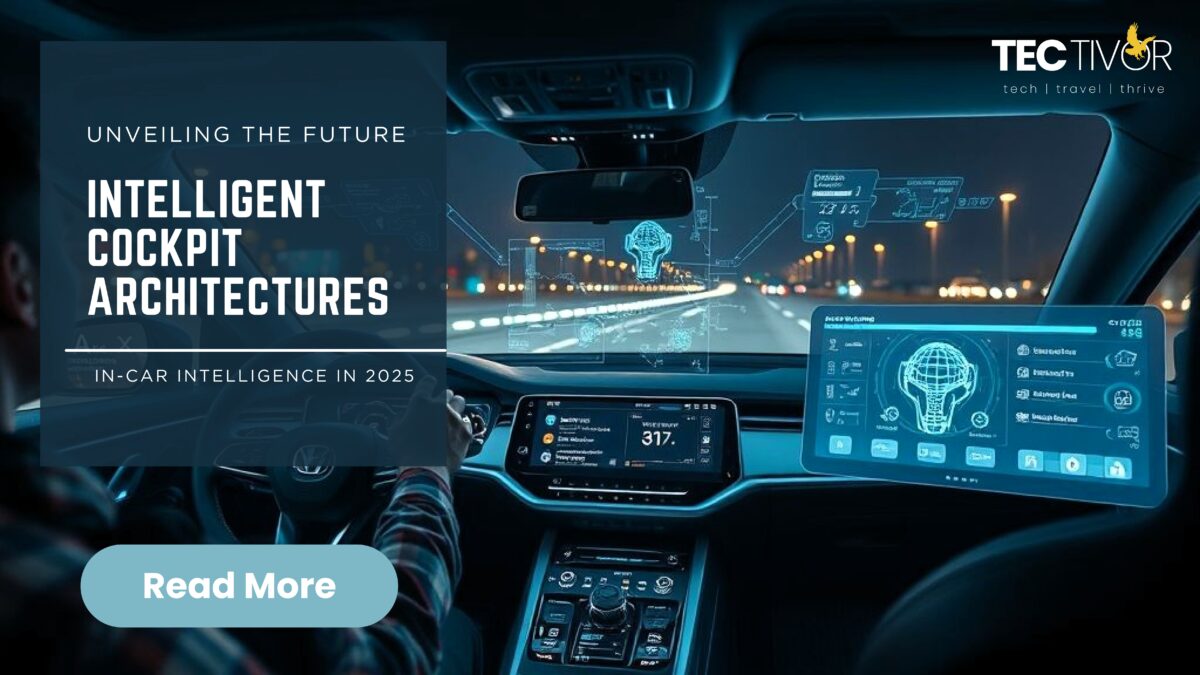The intelligent cockpit is rapidly transforming from a mere collection of in-car functionalities into a sophisticated, highly integrated digital hub. This evolution is driven by advancements in hardware and software, pushing the boundaries of human-vehicle interaction, in-cabin experience, and overall vehicle intelligence.
Table of Contents
At its core, an intelligent cockpit platform is a complex interplay of heterogeneous hardware and a multi-layered software stack. This architecture supports a spectrum of capabilities, from basic infotainment to highly cognitive AI-driven interactions. We can categorize these platforms based on their intelligence and functionality:
- L0: Foundational IVI Systems: These provide essential infotainment and basic vehicle functions. Their hardware requirements are relatively modest, focusing on stable operation and fundamental display capabilities.
- L1: Connected & Perceptive Cockpits: Adding connectivity (OTA updates) and initial in-cabin perception (e.g., voice recognition) elevates these systems. The hardware begins to incorporate dedicated processing for sensor data and network communication.
- L2: Partially Cognitive Systems: These cockpits boast enhanced cognitive abilities, encompassing driver/occupant monitoring systems (DMS/OMS), V2X communication, biometrics, and active driver interaction. Crucially, they often integrate on-device foundation models with parameters ranging from 100 million to 2 billion, demanding more robust NPUs and memory.
- L3: Highly Cognitive AI Cockpits: Characterized by strong in-cabin AI performance, all-scenario active perception, and the ability to make intelligent decisions and execute tasks autonomously in specific contexts. These systems necessitate significant on-device AI compute, supporting foundation models with 5 to 15 billion parameters.
- L4: Fully Cognitive AI Cockpits: Representing the pinnacle of cockpit intelligence, these platforms support driverless operation, remote cloud control, and sophisticated emotional interaction. They integrate on-device foundation models with over 30 billion parameters, requiring cutting-edge high-performance computing (HPC) and advanced memory solutions.
Driving Forces Behind Platform Innovation
The continuous advancement of intelligent cockpits is fueled by several critical technological demands:
The Imperative of High Computing Power
The integration of on-device AI foundation models, 3D Human-Machine Interfaces (HMI), immersive in-vehicle gaming, and the convergence of intelligent cockpit and autonomous driving functions necessitate a substantial increase in computing horsepower. Modern high-end cockpit SoCs are now routinely exceeding 200 KDMIPS for CPU compute, with continuous improvements in GPU and NPU capabilities to handle complex algorithms, real-time rendering, and AI inference. The shift towards larger on-device foundation models directly correlates with the need for exponentially higher TOPS (Tera Operations Per Second) for AI acceleration.

The Need for High Bandwidth and High-Speed Transmission
With multiple sensors, multi-screen displays, multimodal interaction, and increasingly sophisticated on-device AI models, the demand for high bandwidth and high-speed data transmission is paramount.
- Bandwidth: From tens of GB/s, DRAM bandwidth is rapidly evolving to over 100+ GB/s, driven by the need to efficiently load and process large multimodal models. The adoption of LPDDR5/5x specifications is critical for meeting these demands.
- High-Speed Transmission: Ensuring fast, low-latency, reliable, and secure data flow across the myriad of cockpit functions and applications is vital. This includes communication between various ECUs, sensors, and the central cockpit domain controller. Emerging standards and protocols are continuously being developed to address these requirements.
The Rise of On-Device AI Foundation Models
AI foundation models are revolutionizing the in-car experience, transforming the cockpit into a more intuitive, personalized, and “emotional” partner. While cloud-based foundation models offer immense computational power, the constraints of privacy, latency, stability, and cost are pushing the industry towards device-cloud cooperative architectures, with a strong emphasis on on-device AI.
Hardware Requirements for On-Device AI
The current generation of vehicle cockpit AI models, often with around 1 billion parameters, are just scratching the surface. Future intelligent cockpits will demand the ability to support large language models (LLMs) with over 7 billion, and even 10+ billion parameters, necessitating significantly higher compute and memory resources.
- Single-Chip Solutions: Companies like MediaTek are introducing advanced 3nm SoCs (e.g., MT8678) with substantial NPU compute (e.g., 46+ TOPS) to support large on-device AI models, including LLMs and Stable Diffusion, and integrate diverse functions like IVI, cluster, AVM, DMS, and APA.
- Multi-Chip Architectures: To ensure low-latency, efficient, and stable operation for highly demanding cockpit features, some OEMs are adopting dual-SoC configurations. For instance, utilizing dual Qualcomm Snapdragon 8295 chips can create a high-compute backbone capable of driving features like multi-screen interconnection, 3D visual desktops, cross-screen gestures, and advanced AI assistants. However, this comes with a direct trade-off in cost, presenting a challenge for OEMs to balance performance gains with economic viability.
Software Requirements and Integration of Foundation Models
The deployment of cockpit AI foundation models by OEMs is significantly enhancing the naturalness, adaptability, and personalization of human-vehicle interaction. This involves deeply coupling proprietary AI models with general-purpose foundation models.
For example, a dual-system approach might be employed where basic intents are handled by a vehicle-specific AI foundation model, while more complex requests are processed by a combination of vehicle-specific perception models and robust external reasoning models (e.g., DeepSeek). This distributed intelligence then orchestrates commands across intelligent driving, intelligent cockpit, and generative interaction systems, referencing extensive signal and function libraries.
Immersive Experiences: The New Frontier for Cockpit Applications
Beyond raw processing power and AI capabilities, the application layer of intelligent cockpits is evolving towards delivering immersive and high-quality experiences, particularly in areas like acoustics and HMI.
Advanced Acoustic Systems
The automotive industry is shifting from purely supplier-driven acoustic solutions to a self-development + supplier model, moving beyond traditional single sound output to multi-dimensional sensory interaction. This entails:
- Hardware Upgrades: Integrating more speakers (e.g., 30+ speakers), increasing power output (e.g., 2,800W+), and strategically placing speakers (headrest, rear center surround, dual subwoofers) to create a truly enveloping 360° sound field. The use of advanced materials like graphene diaphragms and NANO-CELL technology further enhances audio fidelity.
- Software-Defined Acoustics: Advanced software features like “Tuning Geek” allow for granular control over gain, delay, equalization across all channels, and full-vehicle reverb effects. This enables deep personalization and the ability to share custom audio profiles, fostering a community around sound experiences. Beyond traditional in-cabin audio, innovative systems are emerging that utilize body panels for sound production and integrate vibration sensing for external interactions, enabling features like external voice recognition, trunk activation, and even exterior stereo music playback.

Dynamic and Intuitive HMI
The HMI is becoming more sophisticated, moving towards 3D visual desktops and cross-screen gesture controls to create a more intuitive and engaging user experience. The integration of AI agents and emotional interaction capabilities further blurs the lines between human and machine, allowing for more natural and empathetic interactions.
The intelligent cockpit is no longer just a dashboard; it’s a dynamic, interconnected ecosystem. The ongoing innovations in hardware compute, memory bandwidth, AI foundation models, and immersive application experiences are collectively redefining what’s possible within the confines of a vehicle. The challenge for OEMs and Tier 1 suppliers lies in harmonizing these advancements with cost-effectiveness and rapid deployment cycles, ensuring a seamless and intelligent journey for the end-user.
What aspects of intelligent cockpit development are most critical to your work or research?
💡 Stay ahead of the future! Follow us on:
Facebook | LinkedIn


